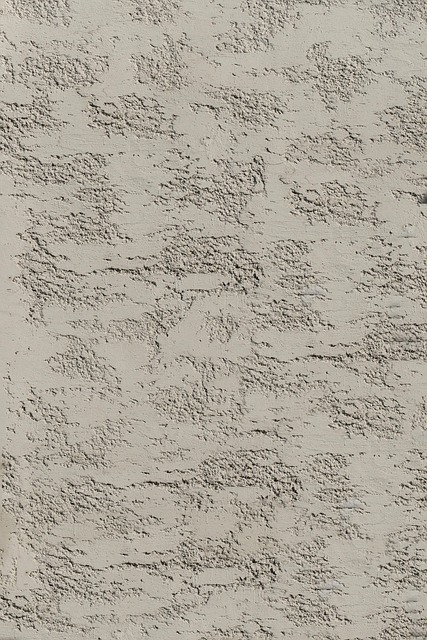Monocouche render offers an innovative way to create visually striking, durable walls with minimal upkeep. Combining vibrant color options and weather resistance, it outperforms many traditional renders in both appearance and longevity. Understanding its application process and key advantages helps homeowners and professionals achieve flawless finishes that enhance any exterior. This guide provides essential insights for mastering monocouche render techniques and unlocking its full design potential.
Monocouche Render: Creating Visually Striking Walls
Monocouche Render refers to a type of external render applied in a single coat, designed to create durable and visually appealing wall finishes. Unlike traditional multi-layer rendering systems, monocouche render combines the base and topcoat into one product. This integration simplifies the application process while delivering robust protection against environmental elements.
Topic to read : Bathroom renovations bromley: transform your space with expert care
The fundamental characteristic of monocouche render is its pigmented composition, which means the color is mixed directly into the render. This allows for vibrant and consistent hues without the need for painting afterward. The render for homes thus offers a broad spectrum of design choices, appealing to those seeking both functionality and aesthetic impact.
Visually, monocouche render delivers a smooth or textured finish depending on the method of application. This versatility makes it distinct from conventional renders, which often rely on separate topcoats or painting stages to achieve their final look. Monocouche render provides an all-in-one solution that maintains its appearance and integrity over time.
Also to see : What is the best way to waterproof a basement in a UK home?
When compared to traditional rendering options, monocouche render excels in weather resistance and color retention. Traditional methods might require multiple coats, increasing labor and the risk of visible cracks or inconsistencies. In contrast, the single-layer monocouche render minimizes these issues while offering excellent breathability and water resistance.
For homeowners aiming to update or protect exterior walls, monocouche render presents a compelling balance of style and durability. Its efficiency and range of finishes make it a front-runner among modern external render choices.
Advantages of Monocouche Render for Modern Wall Finishes
Discovering the benefits of monocouche render reveals why it is a favored choice for many modern construction projects. One of its most significant advantages is its exceptional render durability. Unlike traditional renders, monocouche render is designed to withstand diverse climates, offering strong resistance to rain, frost, and ultraviolet (UV) exposure. This makes it ideal for buildings located in regions with unpredictable weather patterns, ensuring walls remain intact and visually appealing for years.
When considering render color choices, monocouche render offers a wide spectrum that remains vibrant over time. Thanks to its pigmented composition, the color penetrates deep into the render, providing built-in color that does not require additional painting. This fade resistance ensures your building maintains an attractive façade without frequent touch-ups or repainting, enhancing aesthetic longevity.
Another compelling benefit of this material is its low maintenance render attributes. Monocouche render’s smooth, breathable finish resists moss and algae growth, reducing the effort and costs associated with upkeep. For homeowners and developers seeking cost-effective exterior solutions, this means reduced long-term expenses and minimized repair work. Considering all factors, monocouche render presents a durable, colorful, and practical option that aligns well with modern architectural demands.
Step-by-Step Guidelines for Achieving Stunning Monocouche Render Walls
Achieving a flawless finish with monocouche render starts with meticulous surface preparation. First, clean the wall to remove dust, loose particles, and any existing coatings that may affect adhesion. A stable, dry surface ensures the render bonds effectively. If the wall has cracks or uneven patches, repair these with appropriate fillers before proceeding.
Mixing the monocouche render requires precision. Use clean water and follow the manufacturer’s recommended ratios closely to achieve a consistent, workable mix. Overmixing or adding excess water can weaken the render, leading to cracks or colour inconsistencies. For best results, mix only the amount you can apply within the pot life of the product to maintain optimal workability.
Applying monocouche render demands a steady hand and attention to detail. Apply the first coat using a hawk and trowel, working from bottom to top in sweeping, even strokes. Aim for a uniform thickness—typically around 15mm—but adjust slightly if the manufacturer advises. After the base coat sets, finish with a second coat for both durability and aesthetics. To maintain colour consistency throughout, ensure you blend from multiple bags if your project is extensive, and apply in controlled environmental conditions to avoid premature drying or colour shading.
To attain a smooth, even finish, use a sponge float or a metal trowel, depending on the desired texture. Remember, patience during this stage pays off. Avoid rushing, as premature drying can cause surface imperfections. Regularly monitor weather conditions to prevent washing or cracking caused by rain or direct sunlight immediately after application.
Common pitfalls when applying monocouche render include overwatering the mix, insufficient curing time, and neglecting substrate preparation. These issues can lead to peeling, cracking, or uneven coloration. To prevent these problems, adhere strictly to application guidelines and ensure appropriate curing practices, such as protecting the render from harsh weather during the first 48 hours.
Maintenance of monocouche render walls involves periodic inspection for minor cracks or damage. Early intervention prevents deterioration and extends the life of your render. Cleaning can usually be done with gentle washing, avoiding harsh chemicals that may degrade the surface.
Real-Life Examples: Monocouche Render Transformations
Discovering the true impact of monocouche render starts with real-life applications where walls undergo complete visual metamorphoses. Numerous monocouche render case studies reveal stunning before and after render scenarios that showcase the material’s ability to modernize and protect exterior walls simultaneously.
One key benefit evident in these projects is the versatility of rendered wall inspiration. Whether applied to rustic cottages or contemporary homes, monocouche render offers a seamless surface finish that enhances curb appeal significantly. For instance, in many case studies, walls previously marred by cracking or inconsistent coloring were transformed into sleek, uniform facades with vibrant tones lasting years without fading.
These projects also highlight unique design features possible with monocouche render. Through custom pigment choices and textural finishes, homeowners achieve personalized aesthetics while maintaining durability. This blend of style and functionality is why experts often recommend monocouche render as an ideal exterior cladding solution.
Lessons learned from these transformations include the critical importance of expert surface preparation and accurate pigment mixing to avoid uneven coloring or premature wear. Adhering to recommended application techniques ensures the render’s performance matches the impressive visual upgrade documented in case studies.
If you’re searching for authentic rendered wall inspiration that marries beauty and longevity, exploring detailed examples of monocouche render transformations offers valuable insights. For additional information about product benefits and application tips, the resource on Monocouche Render is an excellent reference.













